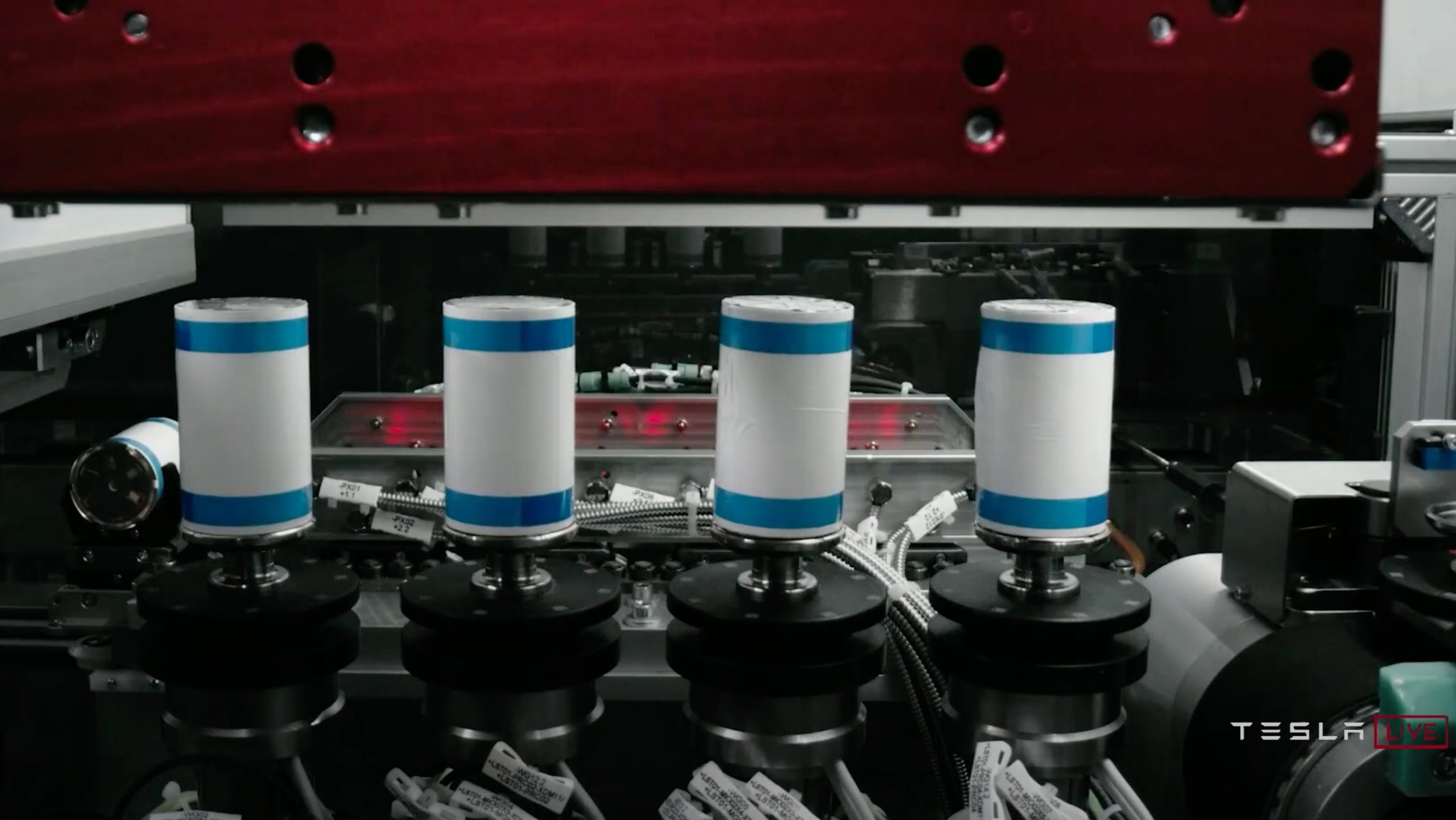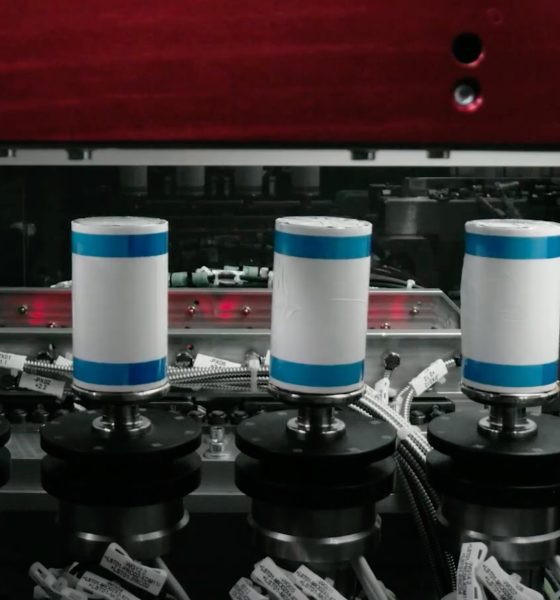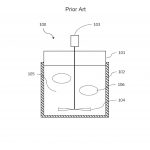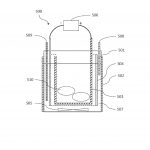Tesla has filed a patent that aims to recover undamaged and unutilized nickel and cobalt, two crucial raw materials in battery cells. The patent outlines the use of an electrochemical dissolution to recover the Earth metals for recycling purposes, moving toward a more efficient supply chain as some battery materials are becoming hard to obtain due to global supply chain shortages.
The patent is titled “Metal Sulfate Manufacturing System via Electrochemical Dissolution” and was filed by three Tesla engineers. The automaker filed it on July 29th, 2021, just days after the Q2 2021 Earnings Call, where Tesla reported its eighth consecutive profitable quarter.
The patent
Battery manufacturing has been a central focus of electric car companies since day 1. Batteries are the lifeblood of electric cars, and as more companies enter the EV sector, batteries and battery materials are becoming less available due to growing demand. One way to utilize EV batteries after their lifespan has come to an end is to recover the undamaged and unutilized raw materials from the non-functioning cells. Battery cell recycling could be the best and most efficient way to alleviate battery material supply shortages and increase the number of available cells for a company’s products. Nickel and cobalt are two materials that would be ideal for this patent: nickel due to its low availability and cobalt due to its environmental effects and commonly immoral mining practices.
“Nickel and cobalt sulfates are often used as raw materials for lithium-ion battery cathode material precursors, nickel metal hydride battery cathodes, and nickel cadmium battery cathodes. It is sometimes difficult or expensive to purchase metal sulfate products from the market due to their limited availability,” the patent states. “As a result, several companies synthesize metal sulfate solutions via dissolution in sulfuric acid from more readily available metal products, such a nickel powder, nickel briquette, cobalt powder, and cobalt briquette. However, the growth of the electric and hybrid-electric vehicle markets is expected to continue into the future and result in a shortage of metal powders and briquettes, in addition to sulfates.”
Tesla aims to utilize an electrolyte bath container to hold a solution for battery cells to be placed in. The bath would utilize “relatively dilute sulfuric acid” in an electrochemical dissolution device with an anode and a cathode, synthesizing a metal sulfate solution from the cathodes, powders, or briquette materials. The metals can be extracted from the cells through the bath, which will have low-voltage currents applied to it, freeing the undamaged materials from the battery.
- Credit: US Patent Office | Tesla
- Credit: US Patent Office | Tesla
Why this is a big deal
The patent, if granted, would open doors for Tesla to recover some of the most crucial elements of an electric vehicle or energy storage battery. With the increased demand for these materials, Tesla could cut its expenditures for material mining and new battery cell production, allowing the company to remove itself from the extensive waiting list for these materials. Costs for both nickel and cobalt have skyrocketed recently. Cobalt has increased in price significantly since September 2019, increasing by 62.64% since then. Nickel is up 9.25% in the same time frame, according to Investing.com.
Musk’s callout for Nickel and Cobalt
Tesla CEO Elon Musk has been requesting nickel for several quarters, even requesting a supplier to offer its services to the automaker for a “giant contract.” Tesla has signed supply deals with Australia’s BHP and has also been in talks with Canadian and Indonesian companies.
Musk said during the Q2 2020 Earnings Call:
“Well, I’d just like to reemphasize, any mining companies out there, please mine more nickel, OK? Wherever you are in the world, please mine more nickel, and don’t wait for nickel to go back to some long — some high point that you experienced some five years ago or whatever. Go for efficiency, as environmentally friendly, nickel mining at high volume. Tesla will give you a giant contract for a long period of time if you mine nickel efficiently and in an environmentally sensitive way. So hopefully, this message goes out to all mining companies.”
Cobalt, a highly controversial metal that is crucial for cell stability, is an element Tesla is attempting to move away from. However, if the automaker can get its hands on reusable cobalt from old batteries, it would likely not say no to the option of having it on hand. Mining practices have widely been characterized as immoral and have taken advantage of child labor. Tesla has worked its way around these issues through routine due diligence checks at its supplier’s mines, but still, getting cobalt out of the supply chain altogether is the goal. Tesla is working toward a zero-cobalt LPF cell in China, and suppliers like Panasonic have also indicated that they could have cobalt-free cells ready in 2-3 years.
Tesla’s patent is available below.
Metal Sulfate Manufacturing System via Electrochemical Dissolution by Joey Klender on Scribd

Cybertruck
Tesla updates Cybertruck owners about key Powershare feature

Tesla is updating Cybertruck owners on its timeline of a massive feature that has yet to ship: Powershare with Powerwall.
Powershare is a bidirectional charging feature exclusive to Cybertruck, which allows the vehicle’s battery to act as a portable power source for homes, appliances, tools, other EVs, and more. It was announced in late 2023 as part of Tesla’s push into vehicle-to-everything energy sharing, and acting as a giant portable charger is the main advantage, as it can provide backup power during outages.
Cybertruck’s Powershare system supports both vehicle-to-load (V2L) and vehicle-to-home (V2H), making it flexible and well-rounded for a variety of applications.
However, even though the feature was promised with Cybertruck, it has yet to be shipped to vehicles. Tesla communicated with owners through email recently regarding Powershare with Powerwall, which essentially has the pickup act as an extended battery.
Powerwall discharge would be prioritized before tapping into the truck’s larger pack.
However, Tesla is still working on getting the feature out to owners, an email said:
“We’re writing to let you know that the Powershare with Powerwall feature is still in development and is now scheduled for release in mid-2026.
This new release date gives us additional time to design and test this feature, ensuring its ability to communicate and optimize energy sharing between your vehicle and many configurations and generations of Powerwall. We are also using this time to develop additional Powershare features that will help us continue to accelerate the world’s transition to sustainable energy.”
Owners have expressed some real disappointment in Tesla’s continuous delays in releasing the feature, as it was expected to be released by late 2024, but now has been pushed back several times to mid-2026, according to the email.
Foundation Series Cybertruck buyers paid extra, expecting the feature to be rolled out with their vehicle upon pickup.
Cybertruck’s Lead Engineer, Wes Morrill, even commented on the holdup:
As a Cybertruck owner who also has Powerwall, I empathize with the disappointed comments.
To their credit, the team has delivered powershare functionality to Cybertruck customers who otherwise have no backup with development of the powershare gateway. As well as those with solar…
— Wes (@wmorrill3) December 12, 2025
He said that “it turned out to be much harder than anticipated to make powershare work seamlessly with existing Powerwalls through existing wall connectors. Two grid-forming devices need to negotiate who will form and who will follow, depending on the state of charge of each, and they need to do this without a network and through multiple generations of hardware, and test and validate this process through rigorous certifications to ensure grid safety.”
It’s nice to see the transparency, but it is justified for some Cybertruck owners to feel like they’ve been bait-and-switched.
Energy
Tesla starts hiring efforts for Texas Megafactory
Tesla’s Brookshire site is expected to produce 10,000 Megapacks annually, equal to 40 gigawatt hours of energy storage.

Tesla has officially begun hiring for its new $200 million Megafactory in Brookshire, Texas, a manufacturing hub expected to employ 1,500 people by 2028. The facility, which will build Tesla’s grid-scale Megapack batteries, is part of the company’s growing energy storage footprint.
Tesla’s hiring efforts for the Texas Megafactory are hinted at by the job openings currently active on the company’s Careers website.
Tesla’s Texas Megafactory
Tesla’s Brookshire site is expected to produce 10,000 Megapacks annually, equal to 40 gigawatt hours of energy storage, similar to the Lathrop Megafactory in California. Tesla’s Careers website currently lists over 30 job openings for the site, from engineers, welders, and project managers. Each of the openings is listed for Brookshire, Texas.
The company has leased two buildings in Empire West Business Park, with over $194 million in combined property and equipment investment. Tesla’s agreement with Waller County includes a 60% property tax abatement, contingent on meeting employment benchmarks: 375 jobs by 2026, 750 by 2027, and 1,500 by 2028, as noted in a report from the Houston Business Journal. Tesla is required to employ at least 1,500 workers in the facility through the rest of the 10-year abatement period.
Tesla’s clean energy boom
City officials have stated that Tesla’s arrival marks a turning point for the Texas city, as it highlights a shift from logistics to advanced clean energy manufacturing. Ramiro Bautista from Brookshire’s economic development office, highlighted this in a comment to the Journal.
“(Tesla) has great-paying jobs. Not just that, but the advanced manufacturing (and) clean energy is coming to the area,” he said. “So it’s not just your normal logistics manufacturing. This is advanced manufacturing coming to this area, and this brings a different type of job and investment into the local economy.”
Energy
Tesla and Samsung SDI in talks over new US battery storage deal: report
The update was related by industry sources and initially reported by South Korean news outlets.

Recent reports have suggested that Tesla and Samsung SDI are in talks over a potential partnership to supply batteries for large-scale energy storage systems (ESS).
The update was related by industry sources and initially reported by South Korean news outlets.
ESS batteries to be built at Samsung’s Indiana plant
As noted in a report from Korea JoongAng Daily, the demand for energy storage systems has been growing rapidly in North America, thanks in no small part to the surge in AI investments across numerous companies. With this in mind, Tesla has reportedly approached Samsung SDI about a potential battery supply deal.
The deal is reportedly worth over 3 trillion Korean won (approximately $2.11 billion) and will span three years, according to The Korea Global Economic Daily. A battery supply deal with Samsung SDI could make sense for Tesla as the company already has a grid-scale battery, the Megapack, which is perfect for industrial use. Samsung SDI could simply supply cells for the EV maker.
Production of the batteries would reportedly take place at Samsung SDI’s joint venture factory with Stellantis in Indiana, which is currently under construction. Samsung SDI recently announced plans to use part of that plant’s EV lines to produce cells for ESS, with a targeted capacity of 30 GWh by the end of next year.
Tesla and Samsung’s partnership
At present, only a handful of manufacturers, including Korea’s LG Energy Solution, Samsung SDI, SK On, and Japan’s Panasonic, are capable of producing energy storage-scale batteries domestically in the United States. A Samsung SDI official issued a comment about the matter, stating, “Nothing has been finalized regarding cooperation with Tesla.”
The possible energy storage system deal adds another layer to Tesla’s growing collaboration with Samsung, which is already in line as a partner in the upcoming production of Tesla’s AI5 and AI6 chips. Early sample manufacturing of the AI6 is expected to begin in South Korea, with mass production slated for Samsung’s Texas-based Taylor foundry when it starts operations.
The AI6 chip will power Tesla’s next wave of high-volume projects, including the Optimus humanoid robot and the autonomous Cybercab service. Musk has called the partnership with Samsung a “real collaboration,” adding that he personally plans to “walk the line” at the Taylor facility to speed up progress.











